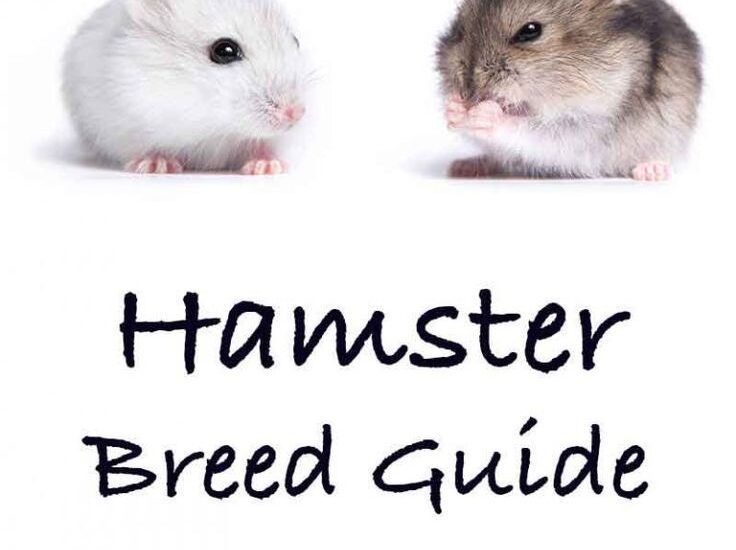The Best Recommendations for Hamster Types
Introduction to Hamster Types
Hamsters are small, furry creatures that make delightful pets for many households. Their friendly nature, low maintenance, and captivating behaviors bring joy to both children and adults. However, with several different types of hamsters available, it’s essential to understand which type might be the best fit for your lifestyle. In this article, we’ll explore the best hamster types, their unique characteristics, and how to care for them.

Syrian Hamsters: The Popular Choice
Syrian hamsters, also known as golden hamsters, are one of the most common and loved types of hamsters. They typically grow to about 6 to 7 inches long, boasting a robust body and a friendly demeanor. What makes Syrian hamsters stand out is their solitariness; they prefer living alone rather than in pairs or groups. For potential owners, it is crucial to provide an appropriately spacious habitat with plenty of exercise opportunities, such as tunnels and wheels.
Roborovski Hamsters: The Smallest of the Bunch
Roborovski hamsters are tiny, measuring only around 4 to 5 inches in length. These energetic little creatures are known for their quick movements and curious behavior, making them a joy to observe. Their sociable nature allows them to live in pairs or groups, so they’re perfect for families or multiple pet households. However, be sure that they have enough space to avoid territorial disputes. Roborovski hamsters enjoy a variety of toys, so keeping their environment stimulating is key to their happiness.
Understanding Different Hamster Species
Beyond Syrian and Roborovski hamsters, there are various other species worth exploring. Each type has different care needs and personalities, which can cater to different pet preferences.
Dwarf Hamsters: A Different Kind of Cuddly
Dwarf hamsters come in several species, including Campbell’s and Winter White, and are known for their playful nature. Typically, they are smaller than Syrian hamsters, measuring about 2 to 4 inches. Dwarf hamsters can be kept alone or in pairs, though it’s essential to monitor them closely to prevent fighting. They are typically friendly and enjoy interactive play, making them suitable for both new and experienced owners.
Chinese Hamsters: Unique and Friendly
Chinese hamsters are medium-sized, growing to about 4 to 5 inches long. They have a unique appearance with a long, slender body and a tail, which sets them apart from other hamsters. Chinese hamsters are known to form strong bonds with their owners but may require more socialization than other types. They are better suited for handling than other species but still appreciate an enriching habitat to thrive.

Caring for Different Hamster Types
Dealing with various hamster breeds requires understanding their specific care needs. Here’s a rather quick overview of the essentials for maintaining a happy hamster.
Habitat Requirements
While all hamsters require clean bedding, ample space, and exercise opportunities, their habitat specifics may differ. Syrian hamsters need larger cages as they are more solitary and require more room to explore. For Dwarf and Roborovski hamsters, cages can be multi-level and should include plenty of tunnels and hiding spots to engage their curious nature. Regular cleaning is a must, ensuring that their environments remain healthy and odor-free.
Dietary Needs and Feeding
Feeding different types of hamsters can vary based on size and species. The staple diet for most hamsters typically includes a high-quality hamster pellet or mix, supplemented with fresh fruits and vegetables. Syrian hamsters generally consume a more considerable quantity due to their size, while dwarf hamsters may need smaller portions. Always provide fresh water, and avoid foods that are harmful to hamsters, such as citrus fruits and chocolate.
Conclusion
Choosing the right type of hamster involves understanding individual species’ needs and compatibility with your lifestyle. Whether you opt for a cuddly Syrian hamster or an energetic Roborovski, ensuring they have proper care, a suitable environment, and lots of love will guarantee a rewarding friendship. Remember each hamster’s unique personality will shine with proper guidance and care.
FAQ
1. What is the lifespan of different hamster types?
While specific lifespans vary, generally, Syrian hamsters live around 2 to 3 years, whereas dwarf hamsters often have a similar lifespan. Roborovski hamsters can live slightly longer, often 3 to 4 years if cared for properly. Factors like diet, habitat, and genetics play critical roles in their overall lifespan.
2. Can I house different types of hamsters together?
It’s not recommended to house different hamster species together, as they can have aggressive territorial behaviors and differing social requirements. Even same-species hamsters can be territorial unless raised together from a young age, so monitor interactions closely.
3. How often should I handle my hamster?
Handling frequency can depend on the hamster species, but daily handling is generally encouraged to build trust. Start slowly, allowing your hamster to get used to your scent and presence before gradually increasing interaction time. Syrian hamsters love interaction, while dwarf hamsters may be a bit more skittish, requiring patience to encourage bonding.
4. What types of toys are best for hamsters?
Hamsters enjoy a variety of toys to keep them engaged. Items like tunnels, exercise wheels, chew toys, and climbing structures fit well. Ensure toys are safe and free from sharp edges or harmful materials, and replace worn-out toys regularly to maintain a stimulating habitat.
5. Is it necessary to provide a wheel in my hamster’s cage?
Yes! Exercise wheels are vital for a hamster’s health as they promote physical activity and mental stimulation. Ensure the wheel is the right size for your hamster type; for example, Syrian hamsters need a larger wheel, while dwarf hamsters require a smaller version. Always ensure the wheel is safe and suited for their needs.
Understanding hamster types is crucial for any potential pet owner looking to welcome one into their family. Enjoy exploring the world of hamsters and discover which one could be your next furry friend!
